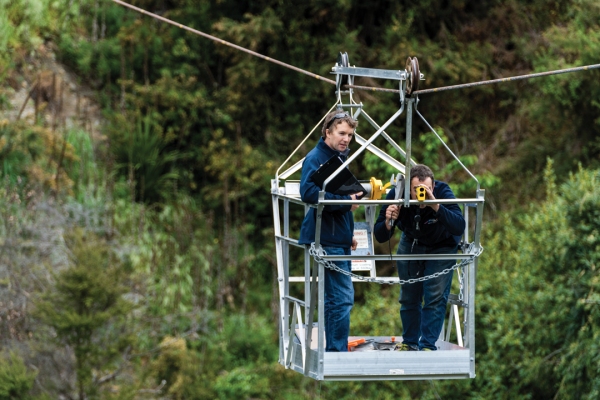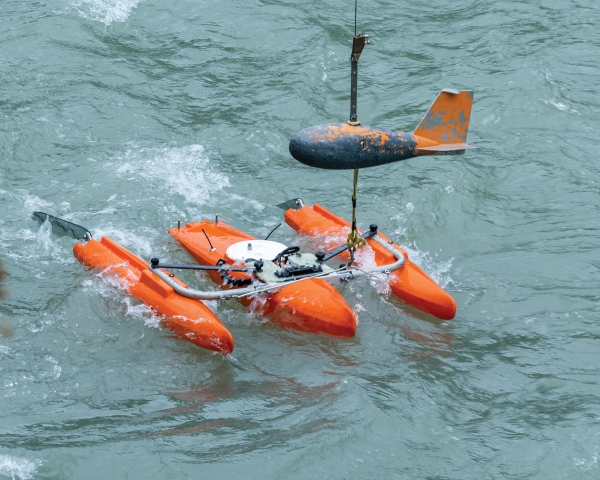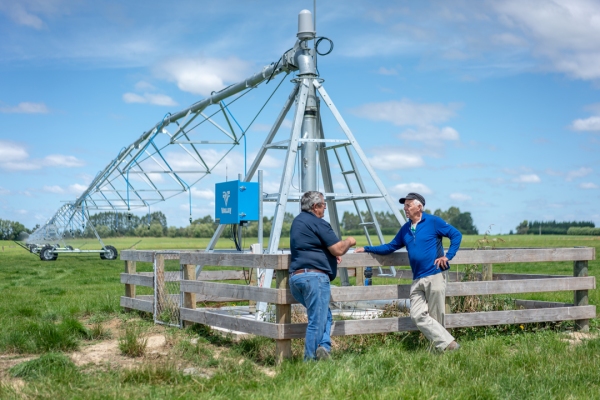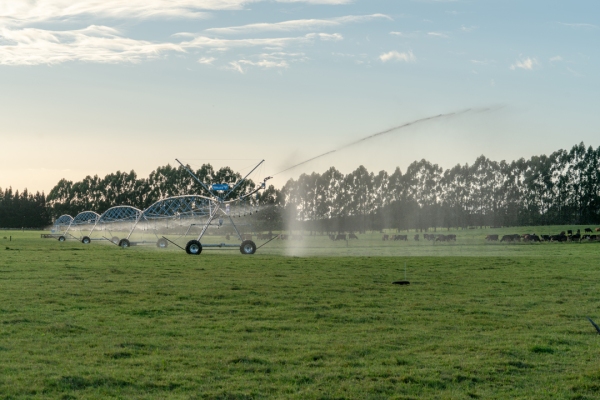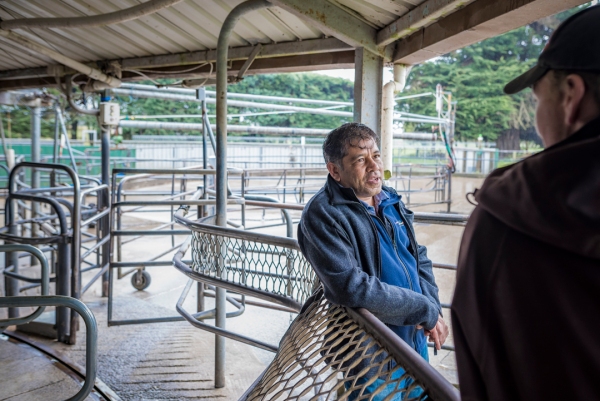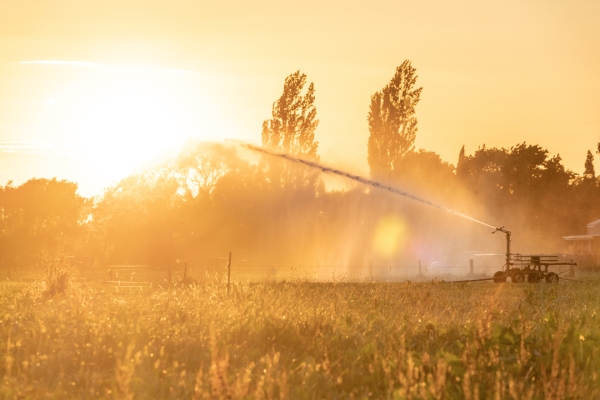Twenty-five metres above the Hurunui River, Hamish Sutton is leaning over the side of a metal cage hanging from a cable. Far below, bobbing on the swiftly flowing waterway is a small boat struggling to stay afloat.
This scene in the north Canterbury hills may look a little precarious, but precise science is under way. Sutton is measuring the flow of the Hurunui River. In the corner of the metal cage a laptop is recording data gathered by an instrument on the boat below that shoots hundreds of acoustic pulses into the water to measure depth and velocity.
Sutton, a NIWA environmental monitoring technician, prides himself on the numbers coming into his laptop. “If you’re not collecting quality data, it’s pretty pointless – it’s easy to forget that out here.”
Sutton’s quality data will be used to build a “rating” of the level and related flow of the Hurunui that will be added to records that began at this spot in the mid-1950s.
These measurements – and others like it all over the region – span monumental change in land use in rural Canterbury. They began before large-scale conversion to dairy farming required vast irrigation schemes. The Amuri scheme, which takes water from the Hurunui, is one of the earlier projects and feeds the now grassy paddocks of the plains.
Knowing the volume of water in a river and how fast it travels to the coast, is a vital step in deciding how that water can be used to provide hydroelectricity or grow crops or grass – or support a plethora of other industries crucial to our economy. Irrigated agriculture alone contributes about $4.8 billion annually to GDP, and accounts for about two-thirds of all water used in New Zealand. However, the demand and supply balance is changing for agriculture, as it is for other industries. Notwithstanding that taking water out of a river also alters its natural flow regime and can have unforeseen consequences elsewhere.
Or, as NIWA’s Chief Scientist for freshwater Dr Scott Larned puts it, solutions can sometimes create problems.
“The conventional wisdom is that you harvest flood water in the winter and store it until it’s needed in the summer. However, floods are required to carry gravels to the coastal zone and if there’s not enough gravel, the waves get hungry and start eroding the land. Sure, it’s a solution, but it’s also creating a problem.”
Larned and his team are preoccupied with one question: How much water should we leave in our rivers to maintain their ecological functions versus how much can be taken out for other uses?
It is a fundamental dilemma which has become more pressing as irrigation schemes and plans to dam or alter rivers have multiplied, at the same time as cultural, social and environmental issues demand more consideration.
Swirling around in the mix is climate change, and what that may mean for the future of the primary sector – and all of us.
To understand New Zealand’s water issues, it is important to note that, comparatively speaking, our rivers are short and steep and have little capacity to store or manipulate flows.
Demand for water continues to grow, yet it is increasingly recognised that appropriate
Larned says changes to the way freshwater is allocated to farmers, industry, groups and individuals are inevitable. New national policies for freshwater were announced by the Minister for the Environment in September and focus heavily on river health and water quality issues. The policies also signal major improvements in water allocation, but with minimal guidance about how this will happen.
“Carrying out the science needed to put the policies into action is one of NIWA’s biggest responsibilities,” he says.
Larned says the research community will need to play its part to help deliver meaningful change.
While freshwater reform will be fraught, he is also certain it will happen.
“Water shortages will drive change. I expect there will be substantial progress over the next decade.”
One of the major issues is water consenting. New Zealand has an historical consenting system in which users are permitted to take certain amounts of water for long periods – up to 35 years in some cases. The system has little room for flexibility, and, as Larned points out, has become highly inequitable in places like Canterbury, where most of the available water is consented and there is little left for new applicants.
Treaty of Waitangi settlements have also granted some iwi rights to water and, notably, special status to the Whanganui River which recognises the river as having all the rights of a person. But, up until recently, water allocation rules have fundamentally been all about the economy, not kaitiakitanga. Reconciling the two is virtually unchartered territory.
Larned says NIWA possesses the bulk of hydrological science expertise in New Zealand and will need to provide the science that underpins water allocation reform. However, policy makers will be relying on community, iwi and other partners to identify their priorities and values.
“In one catchment the highest priority may be economic growth, for another it may be restoration of natural land. It is up to people to decide – we can then work out an allocation system to achieve that.”
Hydro-ecological modeller Dr Doug Booker leads a NIWA programme focused on understanding the effects of human water use on surface and groundwater systems. The aim is to inform more sustainable water allocation decisions.
Booker’s work includes carrying out the science behind options such as trading rights to access water, or permitting water to be used on a seasonal timeframe, rather than over decades.
Trading water is theoretically possible under the Resource Management Act, but it would be a radical change for New Zealand, and the infrastructure for it to be implemented doesn’t currently exist.
Booker says that water trading is seen in some quarters as an effective management mechanism because it can deliver economic benefits within environmental limits. It can also recognise the environment as a water user, and transfer water rights to the environment to support ecological, cultural, aesthetic or recreational values.
How we ultimately change to a more dynamic consenting process will be up to central and local government.
Back at NIWA’s Christchurch office, catchment hydrologist Dr MS Srinivasan adds another perspective to the views of his colleagues.
As we leave the city on a grey October day to meet North Canterbury farmer Bruce Baggott at Mandeville, Srinivasan is concerned about the potential lack of summer rain.
“We didn’t get the winter rainfall we needed; irrigation has started earlier this year, so water supply will be an issue.”
Srinivasan is the conduit between water efficiency science and its users. He has spent most of his scientific career working directly with farmers – he knows when scientists talk about climate variability, farmers talk about rain.
“Science cannot always be done behind closed doors – we have to come out and work with people and listen to them."
We find Baggott enjoying a beer at the Platform Bar after a local meeting about a controversial regional council proposal on nitrogen limits. He and his partner, Claire Mackay, moved to Canterbury from Northland in 2000 – when dairy farming was beginning to take off in the region.
They farm 235 hectares at Cust and run 850 cows. The couple is part of the Waimakariri Irrigation Scheme and work with NIWA on a Ministry of Business, Innovation and Employment-funded programme called Irrigation Insight.
Irrigation Insight is a five-year project involving a range of organisations across the sector looking to make better use of available water. The aim is to achieve a balanced irrigation approach that is economically sound and environmentally responsible.
For Baggott, that means starting each day on his tablet checking the high-resolution NIWA weather and soil moisture forecast tailored for his property, along with readings from his network of paddock soil moisture probes.
He has been working with NIWA for three years now, trialling the first tool of its kind developed to manage irrigation in a changing climate. Baggott is in awe of the technology available at his fingertips, but perhaps more appreciative of the partnership he has developed with Srinivasan and his colleague, environmental monitoring scientist Graham Elley.
“Farms are multi-million-dollar businesses and we are capable of making our own decisions, but we want the best information to help make those decisions,” says Baggott.
Elley says Irrigation Insight works because it is based on communication and co-innovation.
“Every situation is unique – with its own set of controls, barriers, opportunities, people with different capacities, capabilities and aspirations, which can be in tension with each other. With all these things we are looking for an operating sweet spot, and that sweet spot is not the same for every farm.”
Future-proofing irrigation practices is best summed up by the desire to achieve a change in mindset from irrigating “just in case” to irrigating “just in time”, with science providing help around nutrient management, water supply and projected climate-change scenarios.
“We need to be looking beyond the biophysical solutions and work with people and listen to them,” says Srinivasan. “Science will give an answer, but everyone holds knowledge, and if we don’t listen, our solutions will not be complete and comprehensive.”
Farmers, says Baggott, are very willing to change and want to be part of shaping the future. “We are trying to improve the land – if we stuff it up, it comes back to bite you.”
This year MPI awarded $400,000 to a NIWA-led project that is examining future-proofing irrigation for climate change. It will develop an adaptation strategy tool to assess the irrigation supply and demand balance under a changing climate.
Further research is proposed that will look at transforming New Zealand’s approach to building water resilience.
If the future looks like a mix of science and farming done differently, then people like ecohydraulics scientist Dr Hamish Biggs will be crucial to the transition.
Biggs was with Sutton high above the Hurunui River for the recent river flow measurements. Minutes earlier he had been flying a drone over the same section of river, programming it to take similar flow measurements to those from Sutton’s small boat, so they can compare the drone for accuracy.
There is no internet coverage at the Hurunui site, but Sutton says it won’t be long before there will be fixed cameras here and at every site water is measured, transmitting huge swathes of data in real time.
“You’ll be able to get any kind of measurement any time you want and from anywhere you want. It will be a game changer for science and for the people who need that science.”
Climate change and irrigation
Ask NIWA hydrologist Dr Christian Zammit how our future climate will impact irrigation and his first response is always: “It depends where you are.”
Zammit is the co-author of a recent report prepared for the Ministry for Primary Industries that analysed the effects of climate change on irrigation supply and demand.
The report gently suggests water users should be exploring a transition to a drought-resilient future “before it becomes necessary”. That’s because the outlook, although uncertain, spells major changes in wind and rainfall patterns.
“There will be more climate extremes across all New Zealand.”
The issue, he says, is that while New Zealand will still get plenty of water, it won’t always get it in the right places.
In essence the North Island will get drier, Marlborough, Tasman and North Canterbury will also get drier, but South Canterbury and below will get wetter.
Zammit’s report also found:
- Demand for irrigated water is projected to increase across most of New Zealand, with effects emerging by 2050 in the North Island and later in the South Island
- Irrigation restrictions will occur earlier in the year, mostly for the North Island
- The reliability of river water supply tends to decline during the century
- The decline in supply reliability and increase in irrigation demand point towards increasingly challenging conditions for irrigators.
Zammit says high-resolution modelling will help New Zealand adapt, but there will need to be some hard decisions made.
“We know temperatures are getting warmer and our precipitation is changing, but that gives us an opportunity to do things differently. It’s really about being prepared and making it a successful story for us.”
Opinion: What next for freshwater science?
Dr Scott Larned - Chief Scientist – Freshwater and estuaries
For most of the time humans have inhabited Aotearoa New Zealand, their impact on aquatic environments has been negligible.
Over the last century, things have changed. A five-fold increase in the human population, large-scale deforestation, intensive agriculture and urban development have all led to widespread water pollution and habitat loss. Many native aquatic species are now threatened with extinction.
There is still a realistic chance to reverse freshwater degradation in New Zealand, but only if we “go hard and go early”.
Going hard entails some stringent regulation, and that’s where the National Policy Statement for Freshwater Management (NPS-FM) comes in.
The NPS-FM came into effect in September 2020. Among other things, it requires councils to set objectives for rivers, lakes and estuaries, and specifies minimum allowable conditions for 18 different aspects of water quality and ecosystem health.
The NPS-FM also directs councils to use the Māori principles of Te Mana o te Wai as the policy framework – this is a profound change from previous legislation.
Full implementation of this wide-reaching policy statement could transform land and water management in New Zealand, and the environmental science community has a major role to play.
Much of the science carried out over the last decade to support the development of the NPS-FM concerned the ecological and human-health indicators that will be used to assess achievement of freshwater objectives.
The next big challenge for the science community is limit setting. This is the complex process of determining the amount of contaminant input (such as sediment and faecal bacteria) from land that is permitted before freshwater values deteriorate.
Limit setting requires scientific knowledge of the relationships between catchment land use and contaminant loss from land, and the impact of those contaminants on aquatic ecosystems and human health. This sounds deceptively simple. In practice, predicting contaminant losses and impacts in response to land use is difficult because of the complexities of catchments and aquatic ecosystems.
Direct observations alone are inadequate for predicting the effects of current land use, or forecasting effects in the future. The solution lies in combining observations with computer models that can link up the entire chain from land use to contaminant losses, to ecological and human health impacts, and finally to freshwater values.
Rapid progress is critical. New models will need to be built, and existing models will need renovation, but this is the most effective way to put the new freshwater policies into action.
This story forms part of Water and Atmosphere - February 2021, read more stories from the series.

